Cowpen Daisy, Verbesina encelioides, goes on the Texas Butterfly Ranch Favorite Species List (FSL). This plant is a rock star.
It starts blooming in March and continues through November. Keep deadheading, and Cowpen Daisy puts out prolific blooms, abundant seeds, and attracts wildlife aplenty.
Drought tolerant and comfortable in various soils, Cowpen Daisy, sometimes called golden crown beard or butter daisy, gets its name from its capacity to easily sprout in disturbed areas–like the cowpen.
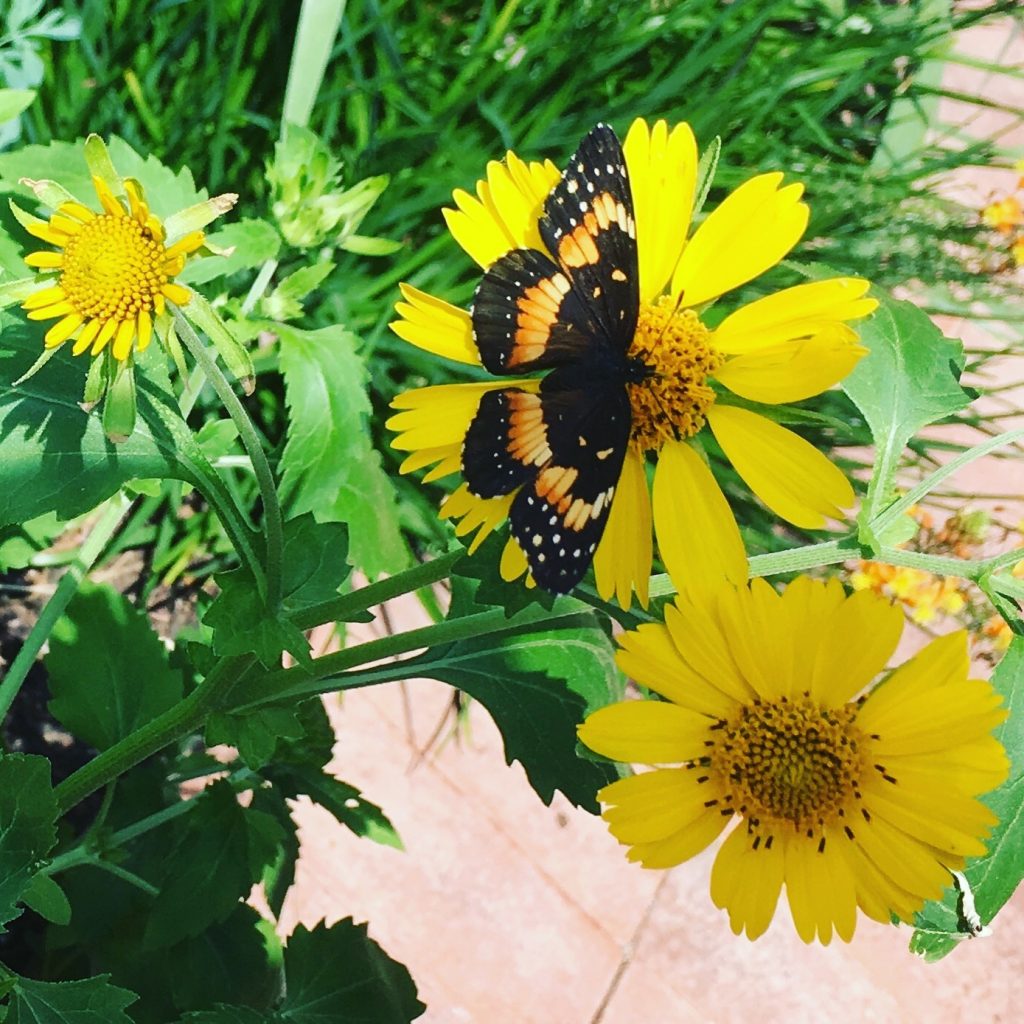
Early blooming Cowpen Daisy works overtime as host plant to the lovely Bordered Patch butterfly. Photo by Monika Maeckle
You can cut it back short or let it grow tall and gangly to create a flowering hedge. As an annual, the plant grows tall in the sun–up to five or so feet. In partial shade it will stay shorter and bloom less. At the ranch, the plant often pops up under pecan trees where it gets morning sun; it also thrives along the dirt road in the blazing Texas summer.
Cowpen Daisy is a great all-around pollinator plant, attracting a variety of bees and butterflies. It also plays host plant to the Bordered Patch butterfly, Chlosyne lacinia, a highly variable member of the Nymphalidae family. The black, white and orange butterflies
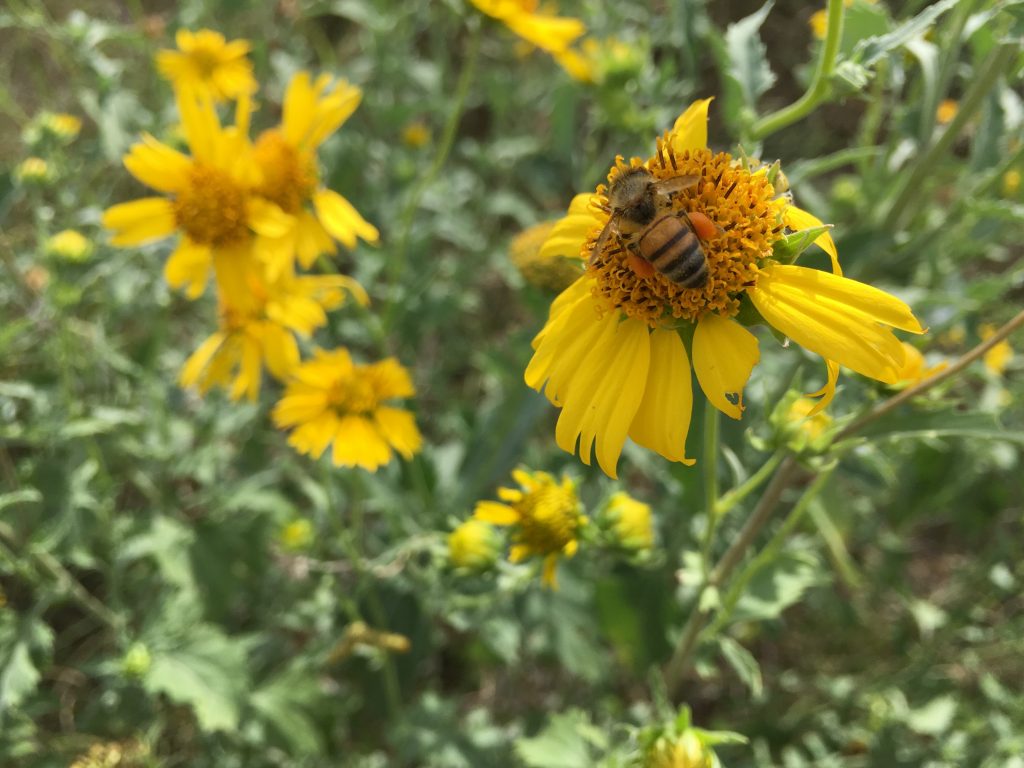
Bees LOVE Cowpen Daisy. And it has a long, low-maintenance blooming season. Photo by Monika Maeckle
lay groups of yellow eggs on the underside of the daisy leaves and other members of the aster family. When the eggs hatch, the caterpillars are gregarious and stick together, decimating small groups of leaves at a time. They morph through their stages quickly from agile orange-and-black spikey (but harmless) caterpillars to interesting tan-and-black mottled chrysalis.
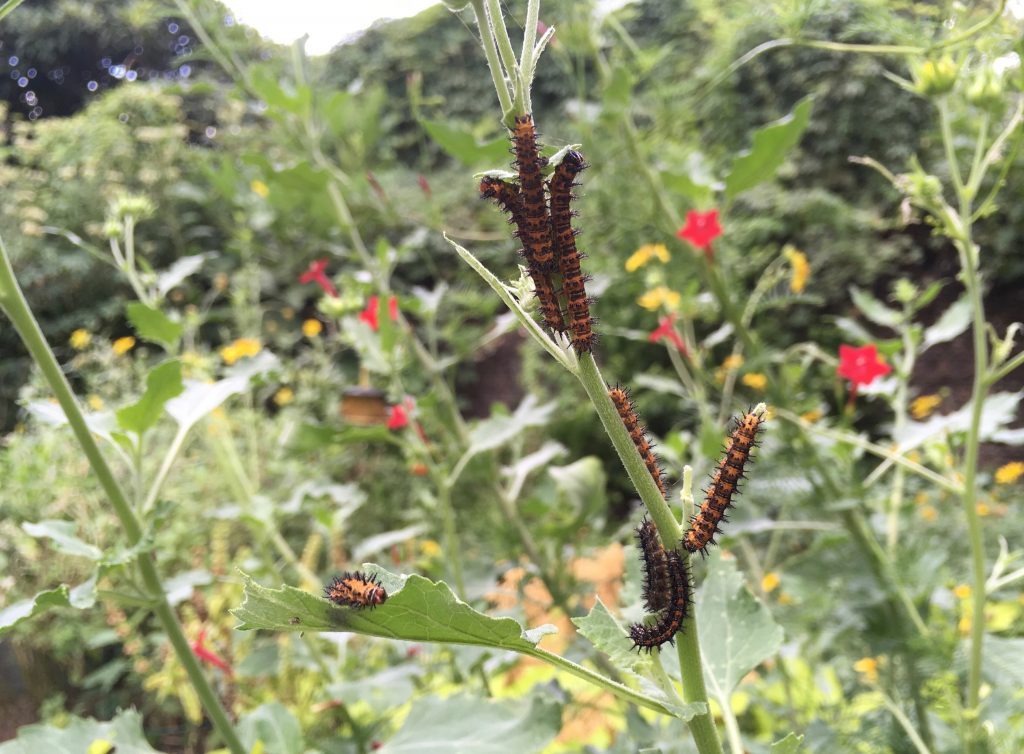
Gregarious Bordered Patch butterflies might strip a stalk of Cowpen Daisy, but no worries–the plant will recover. Photo by Monika Maeckle
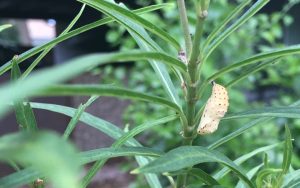
This Bordered Patch chrysalis formed on a nearby Swamp milkweed plant in a downtown San Antonio garden. Photo by Monika Maeckle
In the fall, resist the temptation to slash Cowpen Daisy to the ground as its appearance becomes unkempt. Prolific seeds will fall to the ground or become fodder for birds. In the spring, you’ll have dozens of young plants. They’re easy to pull out, pot up to give away as young seedlings, or leave to compete with each other to provide more gardening fun.
Once you plant Cowpen Daisy, you may never have to do so again.
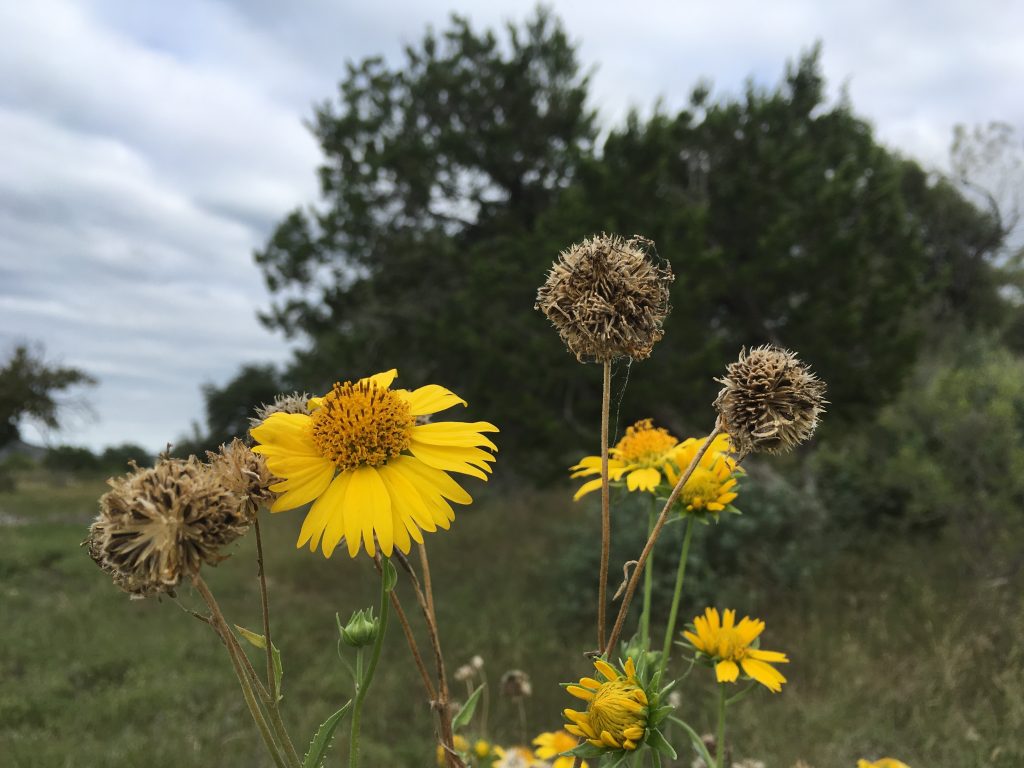
Save those seeds! YOu’ll have plenty of Cowpen Daisy in the spring if you let them drop. And the birds will be happy, too. Photo by Monika Maeckle
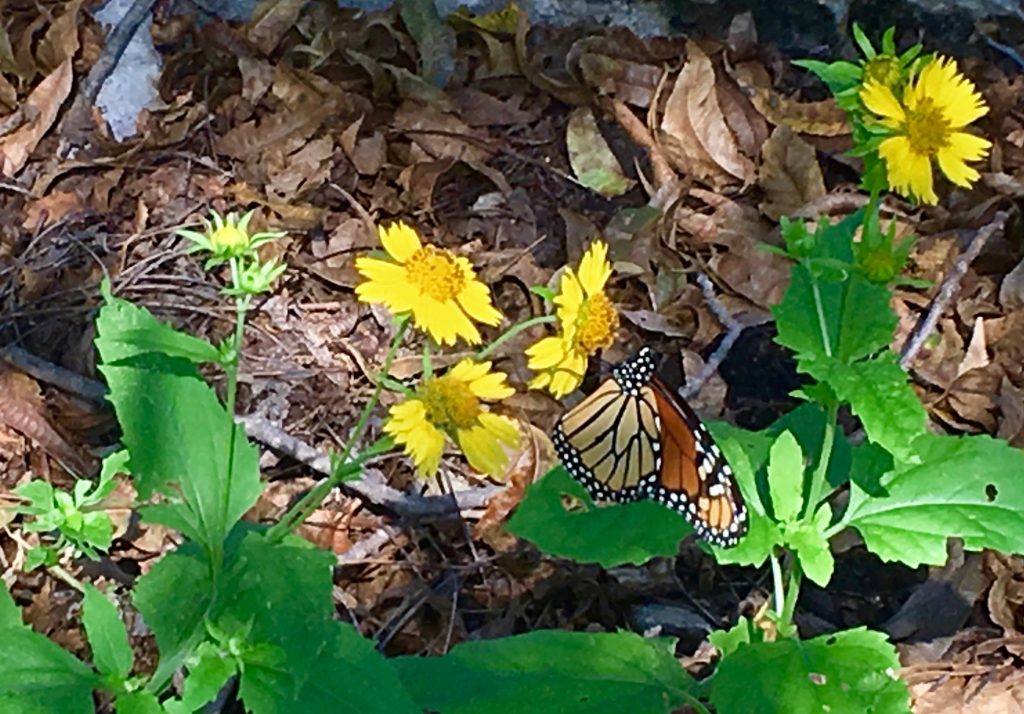
Monarch butterflies frequent Cowpen Daisy in the fall as a nectar source. This picture was taken in October during peak migration week in the Texas Hill Country. PHoto by Monika Maeckle
Related posts:
- How to plan a successful butterfly garden
- Mostly native butterfly garden outperforms lawn every time
- A year in the life of an urban butterfly garden
- Downtown River walk plot converts to pollinator garden, creature haven
- Converting your Lawn to a Butterfly Garden
- San Antonio becomes first National Wildlife Federation Monarch Champion city
- Tropical Milkweed: To Plant it or Not is No Simple Question
- How to raise Eastern Swallowtails
- How to raise Monarch butterflies at home
Like what you’re reading? Don’t miss a single post from the Texas Butterfly Ranch. Sign up for email delivery, like us on Facebook, or follow us on Twitter, @monikam.

Thank you for the suggestion. Here on the southern coast of CA, we have gorgeous fields of this kind of daisy…along with another one, same type of leaf and stem, but white with yellow center spreading onto the petals. So pretty!
And for once, we also have roadside clover with their buttery yellow blooms. And so far they aren’t spraying pesticides or mowing it down.
The Cowpen daisy looks a lot like what we call tickseed in SC. Could they be the same?
Maybe. Flowers take all different names in different areas. Check the latin name to be sure.
Thanks for the info. This is our second year to have the cowpen daisies. I didn’t find any bordered patch cats last year, but found several gray hairstreak cats.
Thanks so much for this article Monica. It has been shared with numerous members of the Ft. Bend Co. Master Gardeners and the Coastal Prairie Master Naturalists. You can be sure we will let you know when the Bordered Patch comes to our yards! (I saw one recently when I was at the Enchanted Forest Nursery in Booth, TX–southwest of Sugar Land, TX. I pointed it out to one of the owner/workers there that day.
Thank you for the information. We have them growing wild at our ranch. They are attracting so many Monarchs during Fall migration. I counted 15 on a patch of daisies today. Honeybees, various skipers and a few Queen butterflies joined in too.
I always thought it was called cowpen daisy because the cows didn’t eat it and thus that is why it was all in the cowpens lol 🙂
Is it deer resistant?